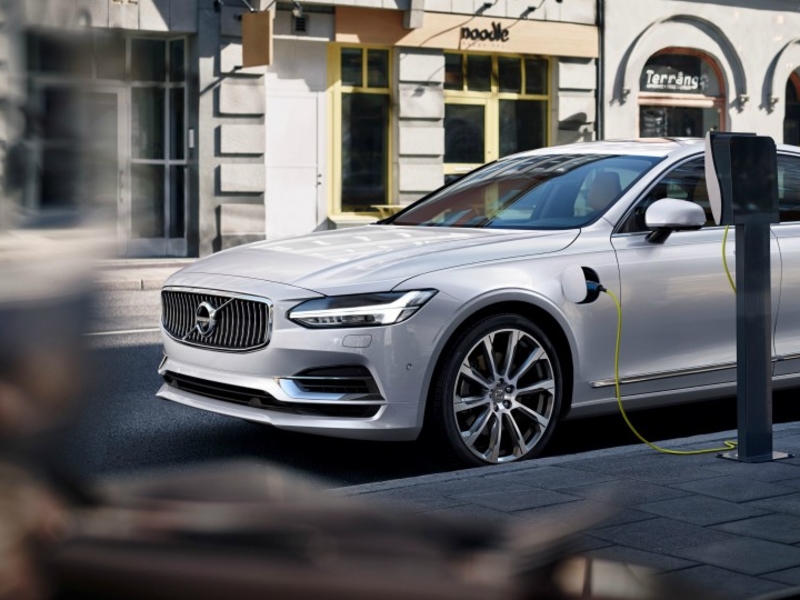
Volvo wants a quarter of its vehicle sales in Europe this year to be plug-in hybrids to help the automaker avoid fines if it misses the European Union’s latest CO2 emissions reduction goals.
The increase would represent a huge jump from 2019 when Volvo said it sold 46,000 plug-ins in Europe, representing around 10 percent of its volume.
The stakes are high for Volvo’s electric strategy because conventional SUVs made up more than half of sales last year and are largely behind the automaker’s success since the takeover by China’s Zhejiang Geely Holding Group a decade ago.
PA Consulting Group puts Volvo’s potential fines from the EU for this year at a quarter of its annual operating profit.
CEO Hakan Samuelsson said Volvo will achieve its EU target this year through increased sales of plug-in hybrids.
“We don’t plan to pay any fees or penalties. We want to use our money for product development, not paying Brussels,” Samuelsson said at a press event.
Volvo’s EU’s target for fleet CO2 emissions this year is 111 to 112 grams per km. Its emissions in 2018 were 129.5 g/km and will drop to 121 g/km by 2021, attracting a fine of 382 million euros, according to a report by PA Consulting Group.
Volvo will begin sales of its first full-electric car, the XC40 Recharge compact SUV, in the autumn. The EV will also help it achieve its reduction target, along with plug-in models.
Plug-in hybrids combine an electric motor and internal combustion engine and can run for distances of up to 50 km on electric power alone, reducing CO2 emissions. Their sales also count towards the EU’s super-credits that allow companies to offset sales of higher CO2 conventional gasoline and diesel models.
Plug-in sales have so far been dependent on tax benefits and grants offered by countries in Europe that help offset the higher cost.
Some countries have reduced tax breaks for plug-ins, for example in the Netherlands, because evidence showed buyers were not using the car’s electric driving mode.
Volvo says its plug-in hybrids drive on electric power around 40 percent to 50 percent of the time.
To encourage its drivers to plug in, Volvo will be offering a year’s free electricity to buyers of new plug-in vehicles starting in May.
Volvo offers a plug-in hybrid option for all its car range, the cheapest of which is the XC40 small SUV, which starts at 52,160 euros in Germany.
Volvo said it will roll out cheaper plug-in hybrid versions below the range-topping T8 ‘twin-engine’ plug-in on more of its range as it attempts to make the technology more affordable.
Its new T6 models use the same 2.0-liter electrified powertrain as the T8 but have reduced power. They will be added to the V60 and V90 wagons and XC60 mid-size SUV this year the company said, without giving pricing.
Volvo said it had orders to take sales of plug-in hybrids beyond 10 percent in 2019, but supply is constrained by a shortage of batteries. It said it had now secured battery supply to meet its 2020 plug-in target. The company signed new agreements with battery suppliers LG Chem and CATL last year.
Volvo has also introduced a range of mild hybrids, starting with diesel and gasoline versions on the XC90 and XC60. The mild hybrids, which will wear Volvo’s new B badge, will be equipped with Volvo’s brake-by-wire energy recovery system.
Samuelsson said Volvo’s goal is for half of all cars sold in 2025 to be full-electric and the rest plug-in hybrids.
The question for Volvo and other automakers selling cars in the EU is whether consumers will buy into the plans.
Rival automakers including Mercedes-Benz, BMW and Audi are also rolling out battery-powered models.
The threat of penalties for the companies, dubbed “the 2020 CO2 cliff” by Evercore ISI auto analyst Arndt Ellinghorst, comes at a tricky time, when the region’s market is expected to shrink.
PA Consulting Group earlier this month warned that the EU could inflict 14.5 billion euros ($16.1 billion) in fines on the region’s 13 largest automakers for surpassing carbon-dioxide targets. The penalties will be calculated on the basis of the average emissions of new-car registrations.
For Volvo, they could reach 382 million euros by 2021, based on the assumption that only 14 percent of its sales will be full electric or plug-in hybrids, the consultancy said.
Bloomberg contributed to this report
Volvo’s bet on plug-ins comes despite criticism of the technology for being a half-measure that does not go far enough in reducing emissions, especially as some users run them on fossil fuels without charging the battery.
European sales dropped in the first nine months of last year, but according to a report by BloombergNEF are expected to rise quickly this year due to new models on the market and the emissions crackdown.
Volvo’s own studies indicate its plug-ins run on battery 40 percent to 50 percent of the time. The company plans to promote recharging by paying owners’ electricity costs.
“We don’t feel that there’s any reason to feel guilty about plug-in hybrids,” Samuelsson said. “Plug-ins are necessary for the transition, but it’s also a more long-term solution for those who may not have adequate access to charging.”